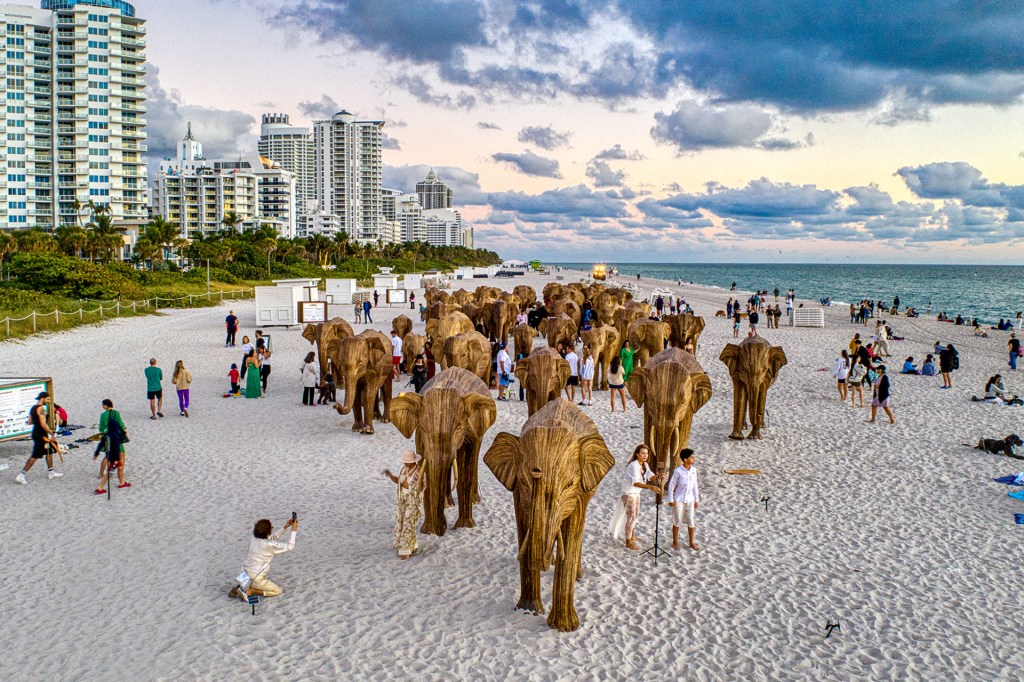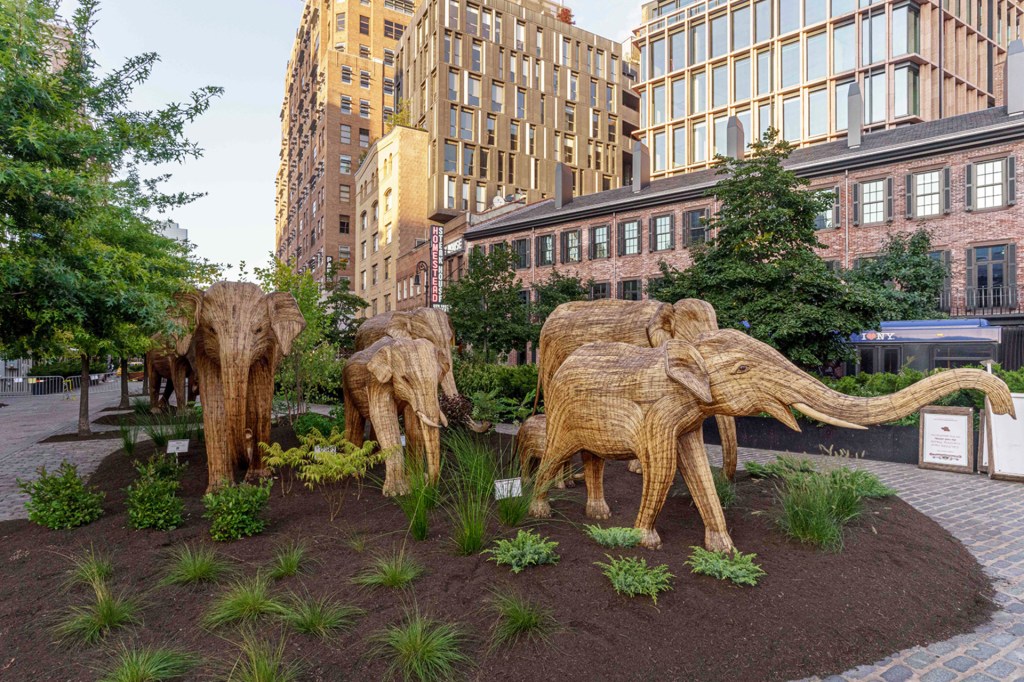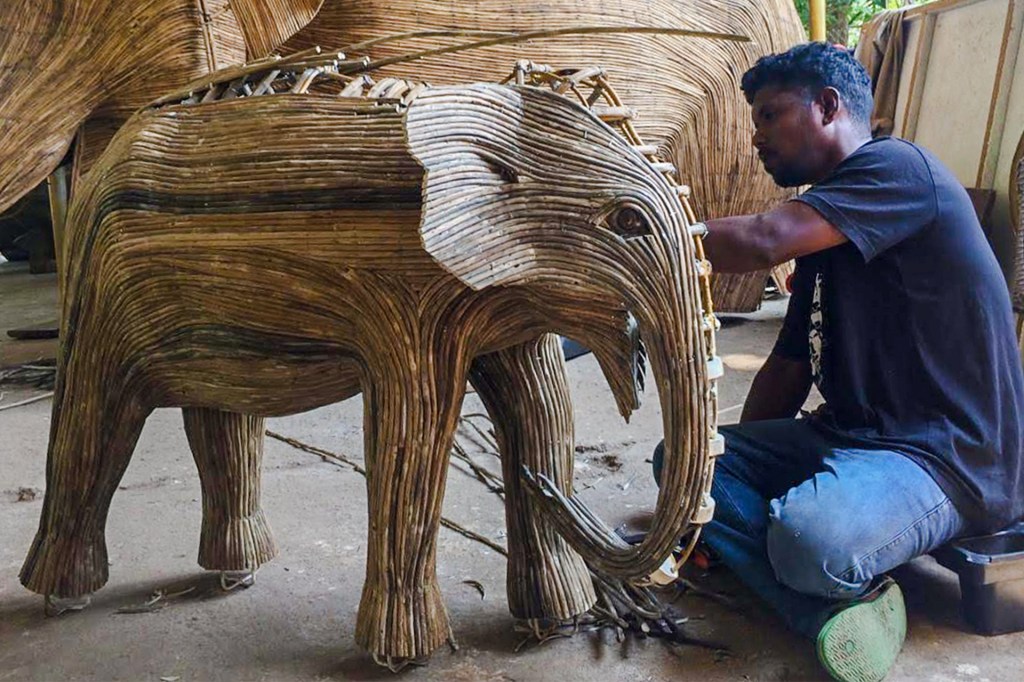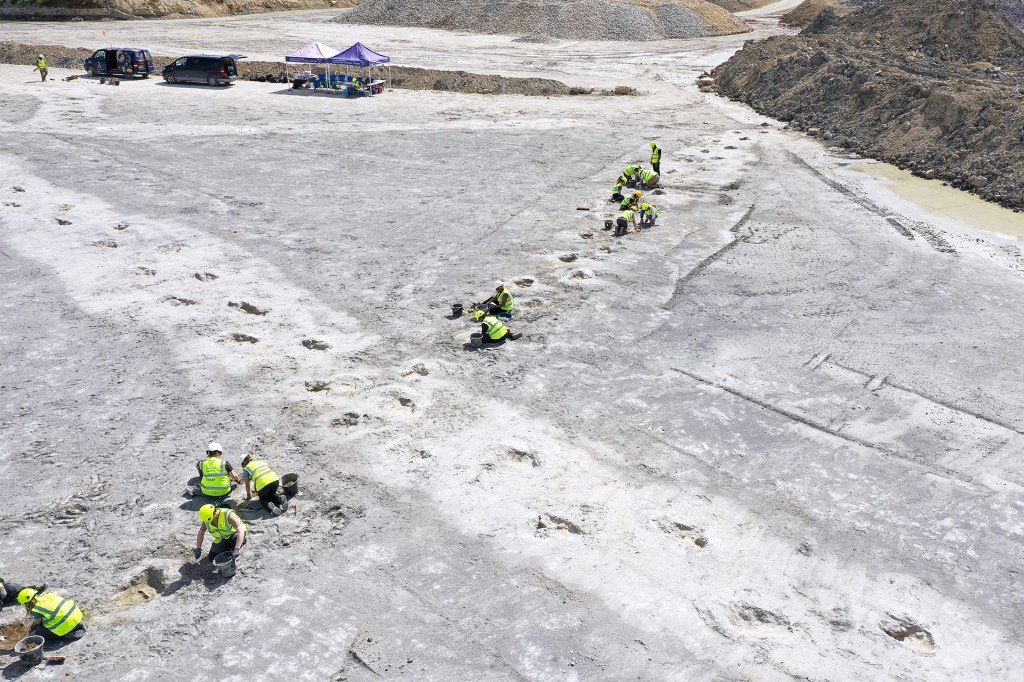
What animals live in your backyard? Squirrels? Birds? Deer? In India, elephants are a common sight. People have to share space with them. This inspired an art project. It’s called The Great Elephant Migration. Its purpose is to remind us that we can live peacefully alongside wildlife. The project also supports Indian artists and habitats.

Visitors take photos with the sculptures in Miami Beach, Florida, in 2024.
COURTESY THE GREAT ELEPHANT MIGRATIONArt on the Move
Artists in India sculpt elephants for the project. The sculptures are taken all over the world. They’re traveling across the United States right now. You might see them in a city near you.

The Great Elephant Migration begins its U.S. tour in July 2024. First stop: Newport, Rhode Island.
COREY FAVINOFiona Humphrey helped start the project. She wants people to interact with the elephants. (Yes, you can touch them!) People can also purchase the artworks. Humphrey spoke with TIME for Kids. She said she hopes visitors will think, “If these elephants lived in my backyard, what would that look like?”

The elephants visit New York City in 2024. Visitors saw them on the streets of Manhattan.
MARK WARNERCareful Crafting
Tarsh Thekaekara is a scientist. He helped start the Real Elephant Collective. That’s a group of 200 artists. They’re in Southern India. They create the sculptures.

The sculptures are modeled on actual elephants. The real ones live in Southern India.
MARK WARNERThe sculptures are as big as real elephants. Parts are made from a plant called lantana. The plant is a problem in India. It destroys wildlife habitats. The artists use the lantana in their sculptures. This helps “against the spread of lantana,” Thekaekara says.

An artist with the Real Elephant Collective works on a baby elephant sculpture.
COURTESY THE REAL ELEPHANT COLLECTIVE
Most of us don’t live among elephants. But we can all think about how we live with wildlife. If people in India live among “the world’s largest land mammal,” Thekaekara says, “surely you can live with everything, right?”












